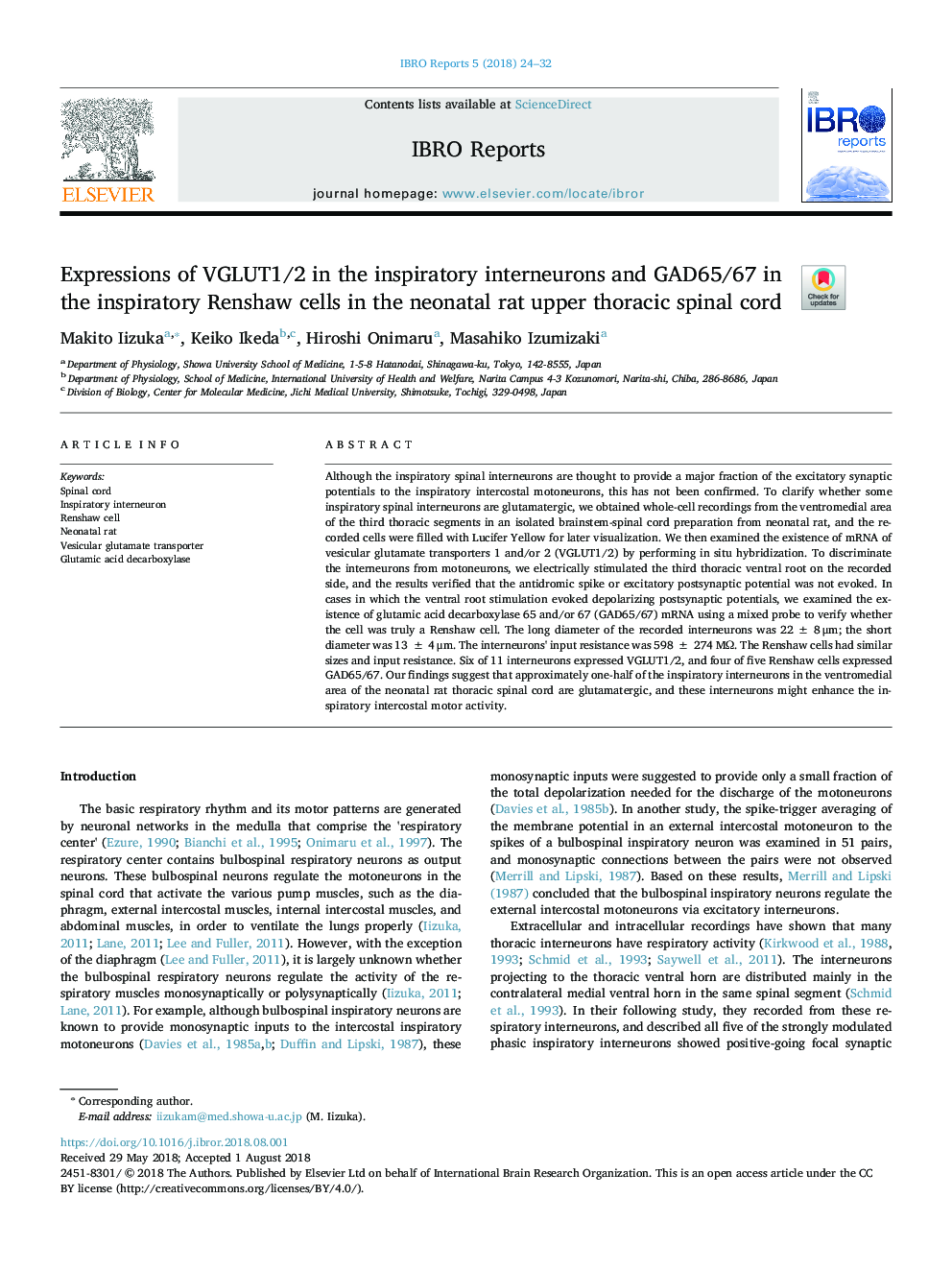| Article ID | Journal | Published Year | Pages | File Type |
|---|---|---|---|---|
| 8839096 | IBRO Reports | 2018 | 9 Pages |
Abstract
Although the inspiratory spinal interneurons are thought to provide a major fraction of the excitatory synaptic potentials to the inspiratory intercostal motoneurons, this has not been confirmed. To clarify whether some inspiratory spinal interneurons are glutamatergic, we obtained whole-cell recordings from the ventromedial area of the third thoracic segments in an isolated brainstem-spinal cord preparation from neonatal rat, and the recorded cells were filled with Lucifer Yellow for later visualization. We then examined the existence of mRNA of vesicular glutamate transporters 1 and/or 2 (VGLUT1/2) by performing in situ hybridization. To discriminate the interneurons from motoneurons, we electrically stimulated the third thoracic ventral root on the recorded side, and the results verified that the antidromic spike or excitatory postsynaptic potential was not evoked. In cases in which the ventral root stimulation evoked depolarizing postsynaptic potentials, we examined the existence of glutamic acid decarboxylase 65 and/or 67 (GAD65/67) mRNA using a mixed probe to verify whether the cell was truly a Renshaw cell. The long diameter of the recorded interneurons was 22â±â8âμm; the short diameter was 13â±â4âμm. The interneurons' input resistance was 598â±â274âMΩ. The Renshaw cells had similar sizes and input resistance. Six of 11 interneurons expressed VGLUT1/2, and four of five Renshaw cells expressed GAD65/67. Our findings suggest that approximately one-half of the inspiratory interneurons in the ventromedial area of the neonatal rat thoracic spinal cord are glutamatergic, and these interneurons might enhance the inspiratory intercostal motor activity.
Keywords
Related Topics
Life Sciences
Neuroscience
Cellular and Molecular Neuroscience
Authors
Makito Iizuka, Keiko Ikeda, Hiroshi Onimaru, Masahiko Izumizaki,
